The laser cutter design is done! It’s time to start building. However as most things take time to ship, lumber is immediately ready for me to get from the local hardware store, Lowes. This project update will be a little bit different from the previous ones as it won’t cover the design process, but the manufacturing process. It’s more a log than a thought process.
Materials
The main structure of the base is built like a house would be. It’s spans and joists of standard framing lumber. I wanted to ensure the base was strong enough not to rock under dynamic conditions from the laser, so it’s probably very overbuilt, but lumber is cheap compared to the rest of the build. I required 4 4″x4″x8′ beams and 2 2″x4″x8′ beams for the base.
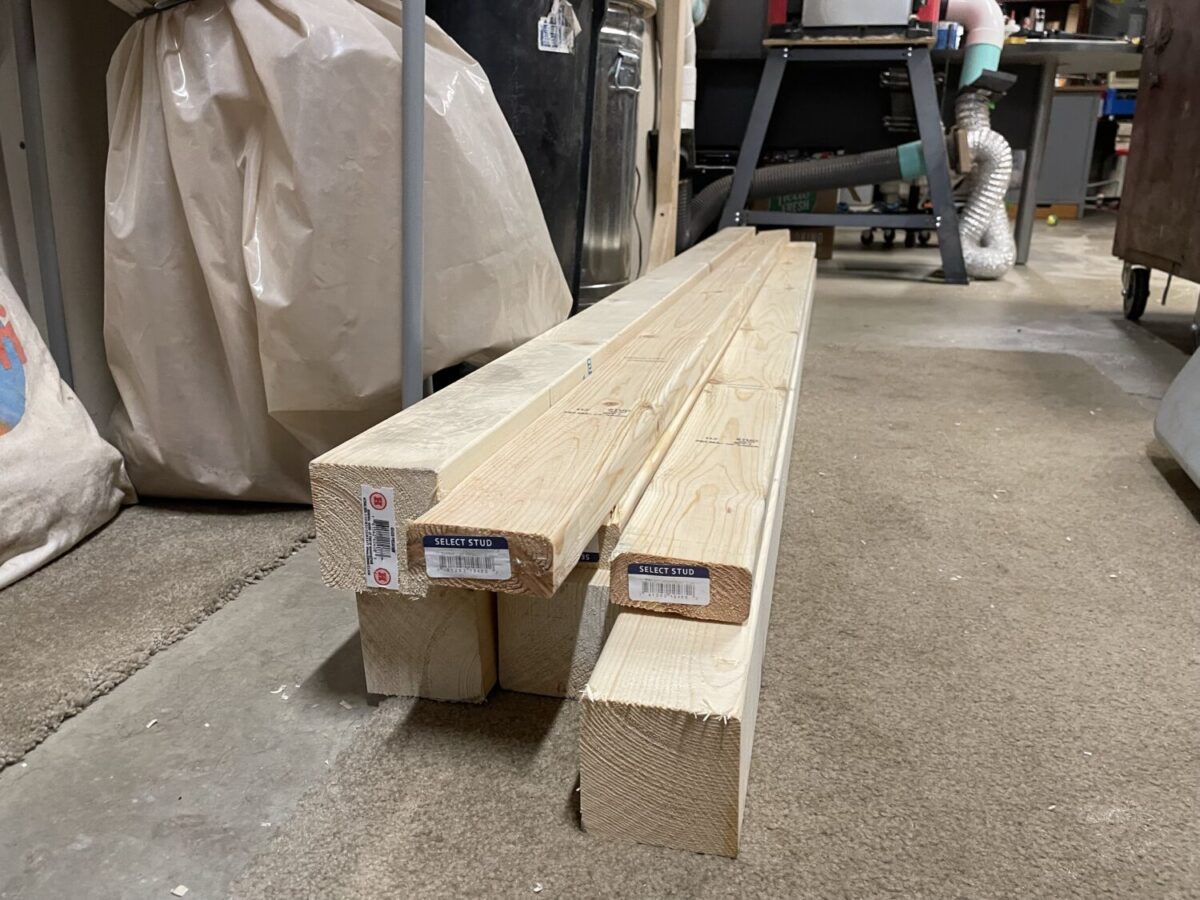
To create the table surfaces, an OSB board was used. It’s very cheap compared to plywood and has approximately the same strength. Two 4’x8’x3/4″ sheets were required.
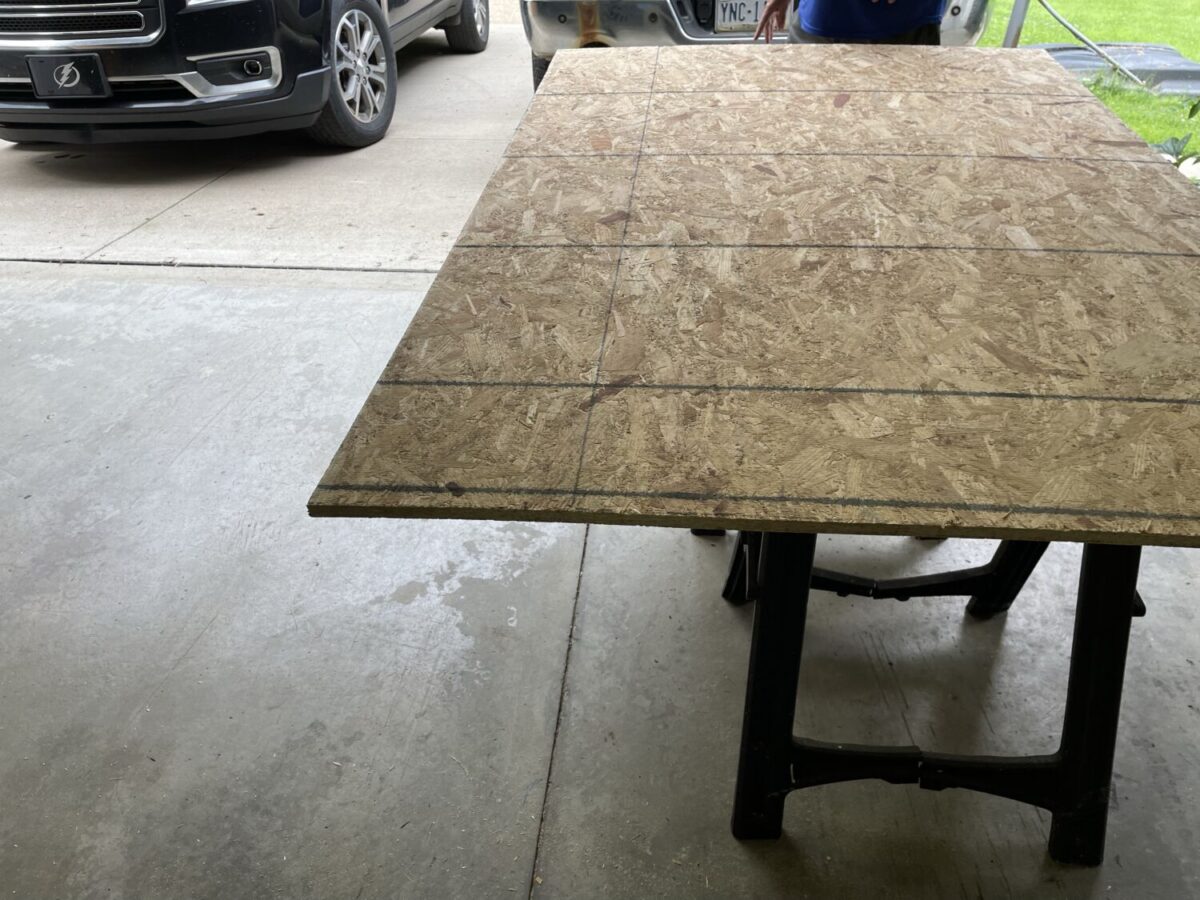
House framing uses brackets to hold beams in place, but because this was definitely not necessary, plus the fact that the brackets would limit my design ideas, I opted to use long wood screws and wood glue for construction.

Preparation
The lumber from Lowes had some rough surfaces, so I opted to plane them to smooth surfaces first, but then cut them to length on the miter saw as required for the frames. I also cut the plywood sheets to within 2″ of the required size for final assembly.
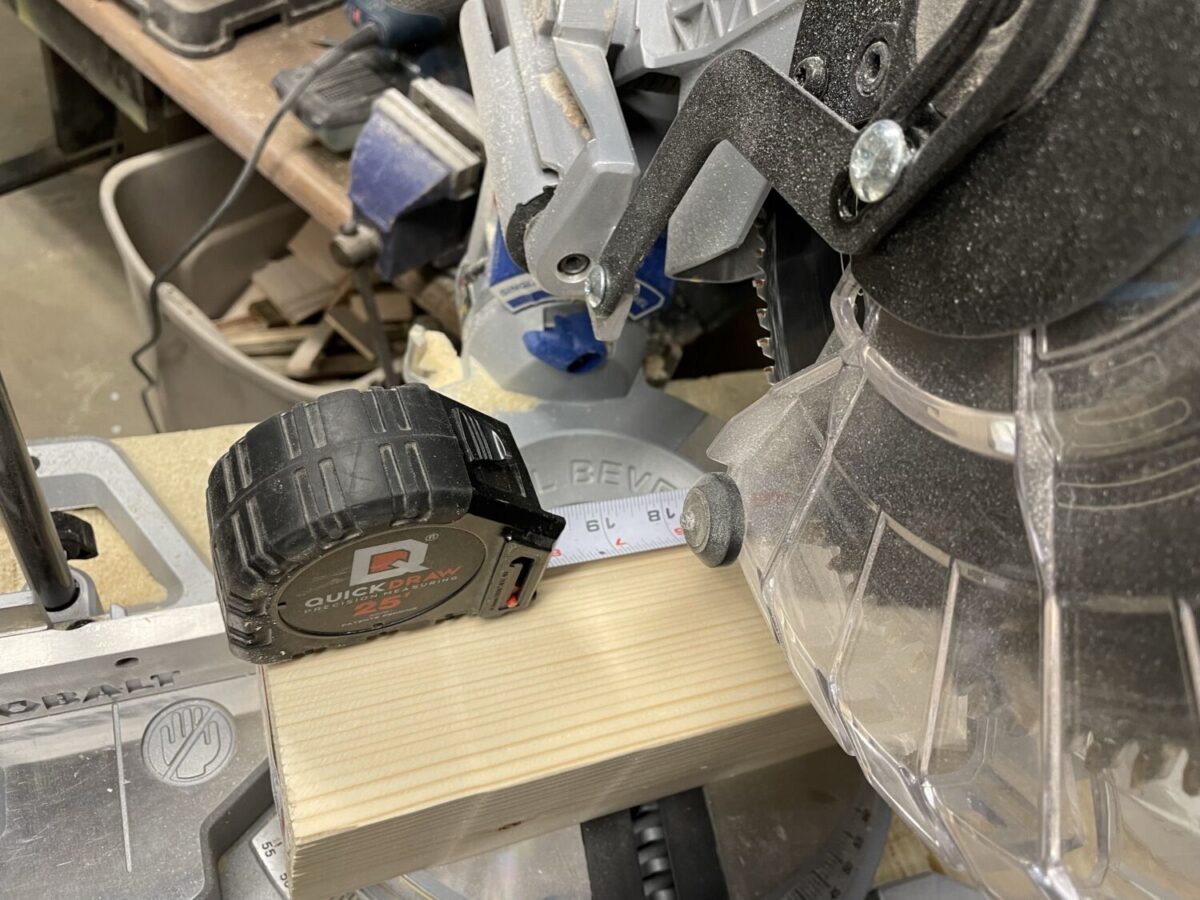
Assembly
The first step was to make frames, then plywood would be layered on top of the frames to finish each base layer. To start each frame, a 4″x4″ beam was pre-drilled for screws. Then each 2″x4″ “joist” is marked, drilled, glued, and screwed into place on the first beam.

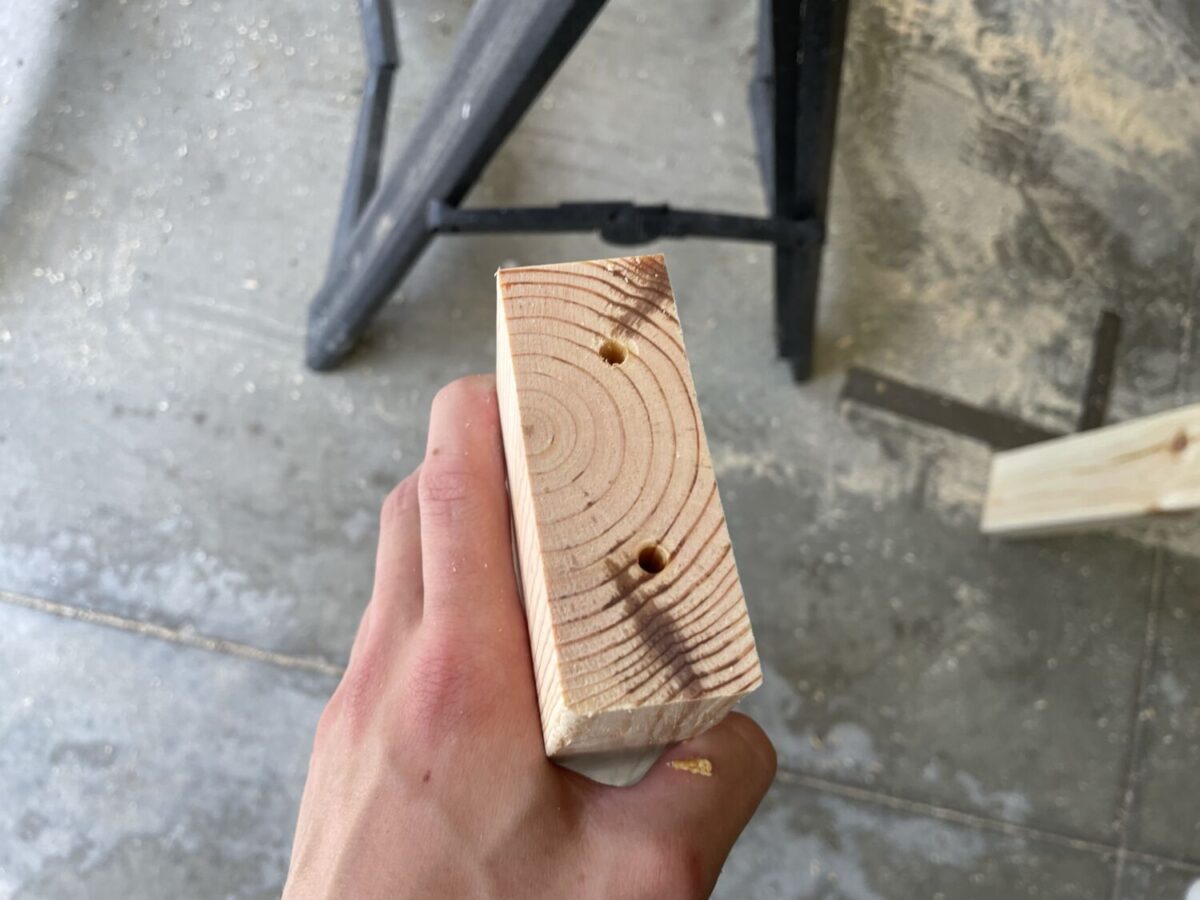
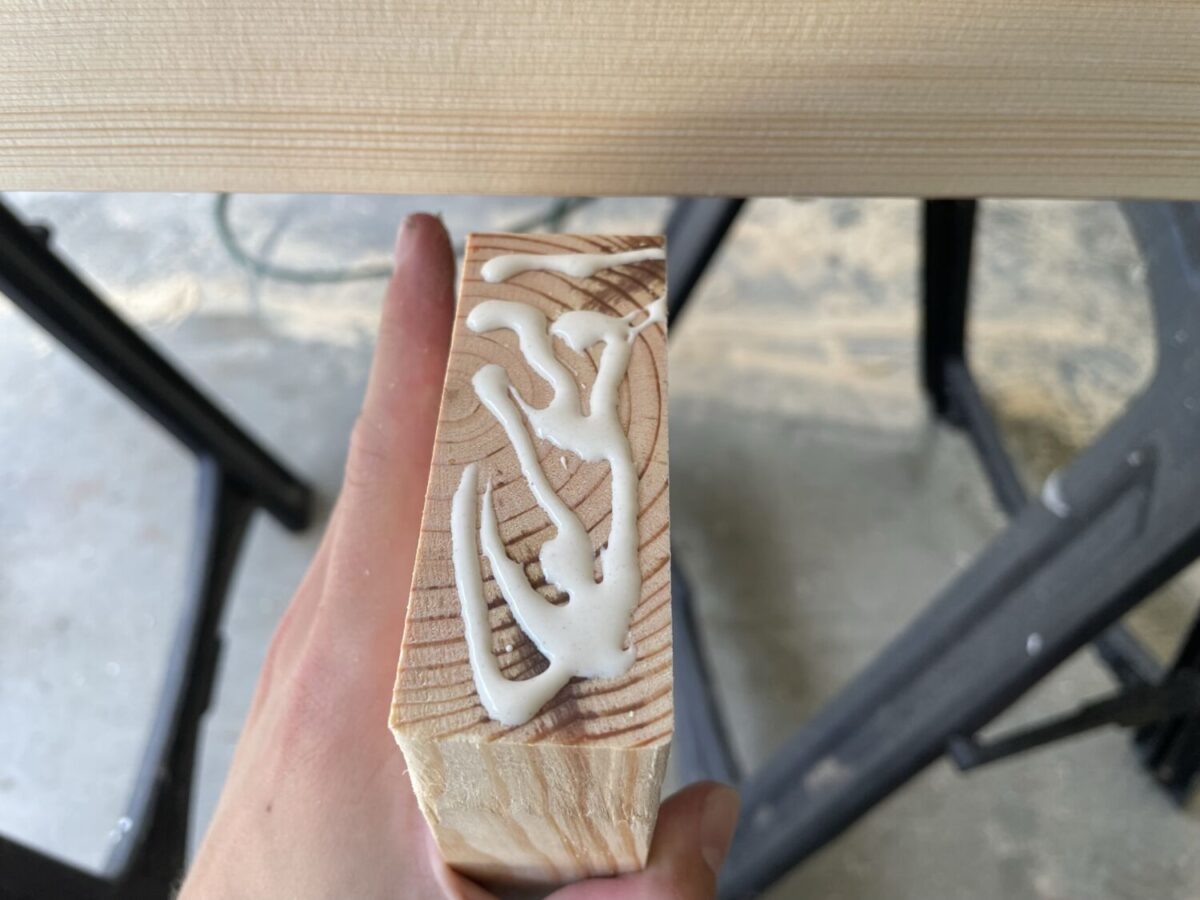
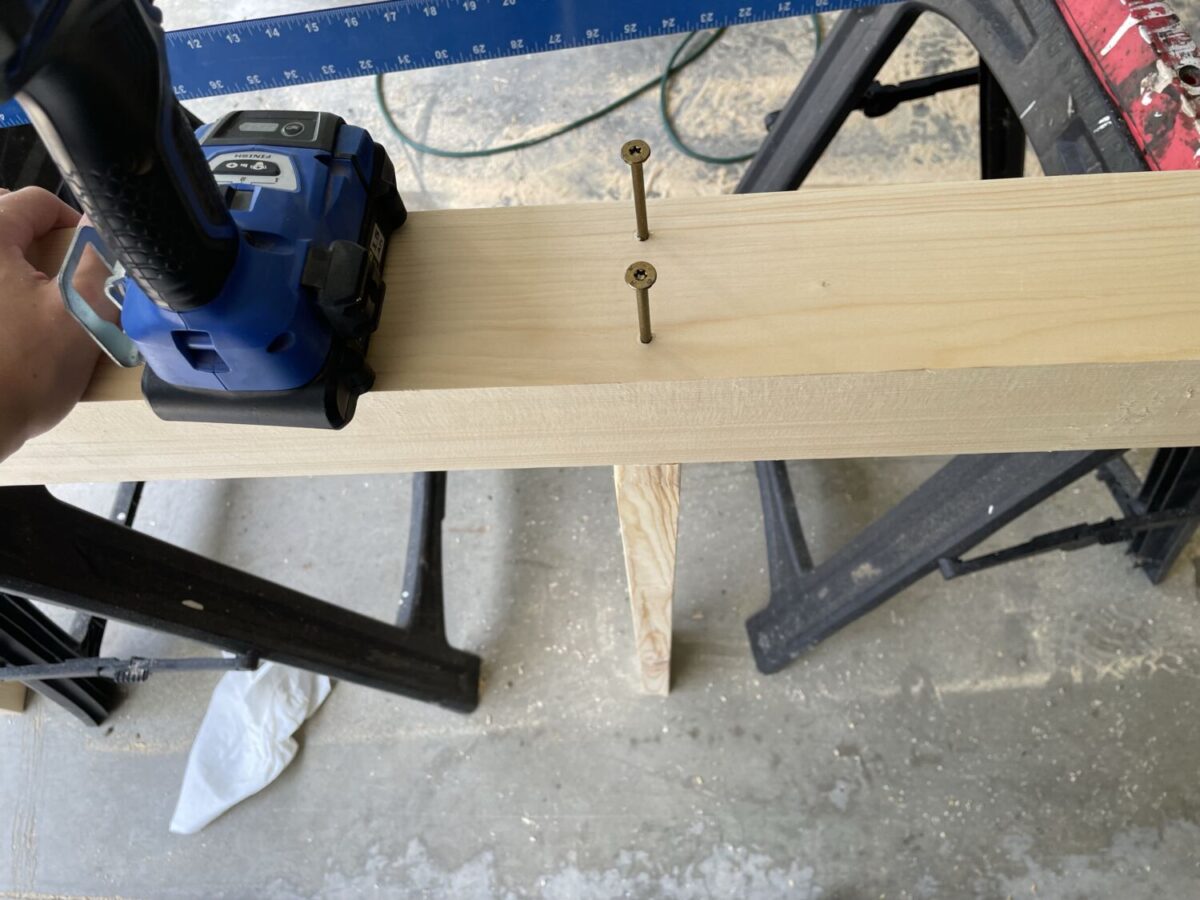
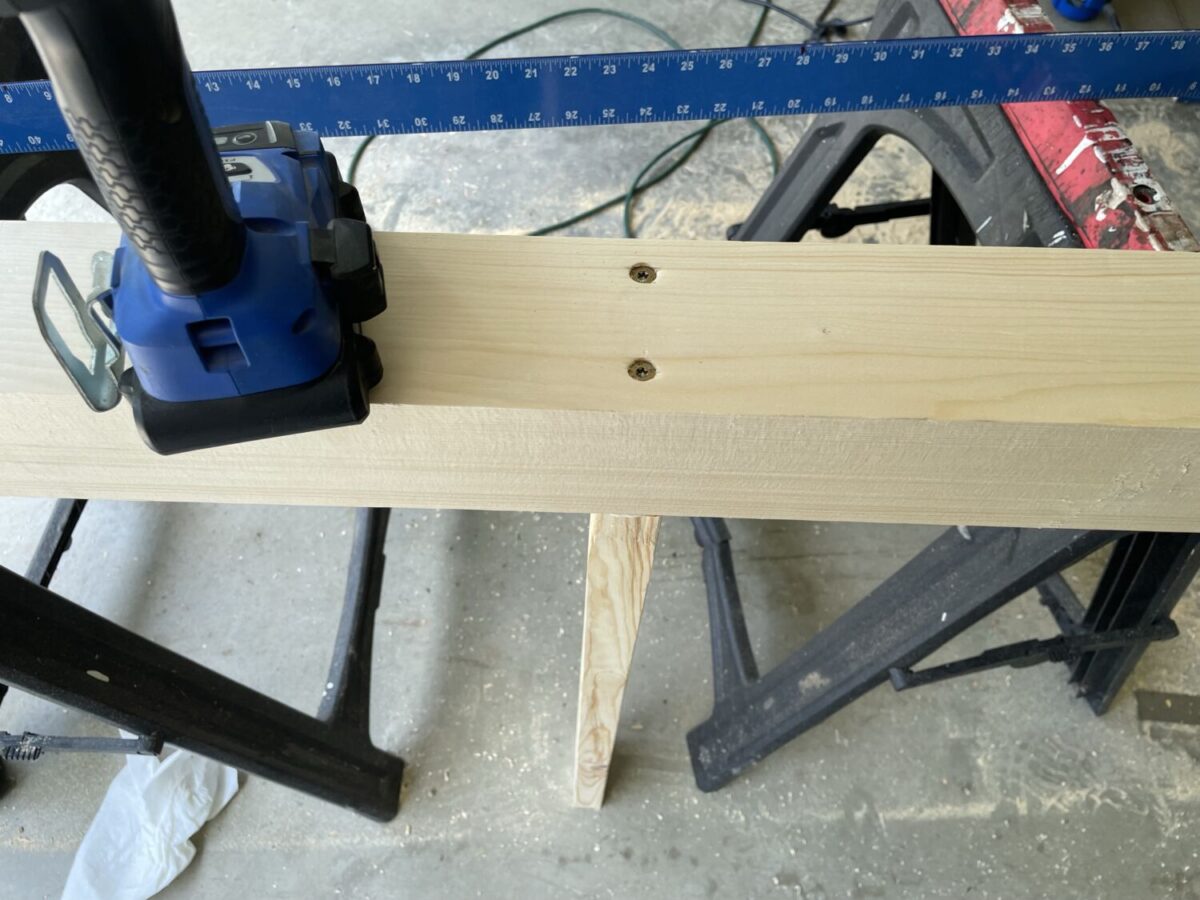
After this is repeated two more times, the final beam can be attached in the same manner to the other side of the joists. This finishes the frame, and I repeated this process to create the two frames.
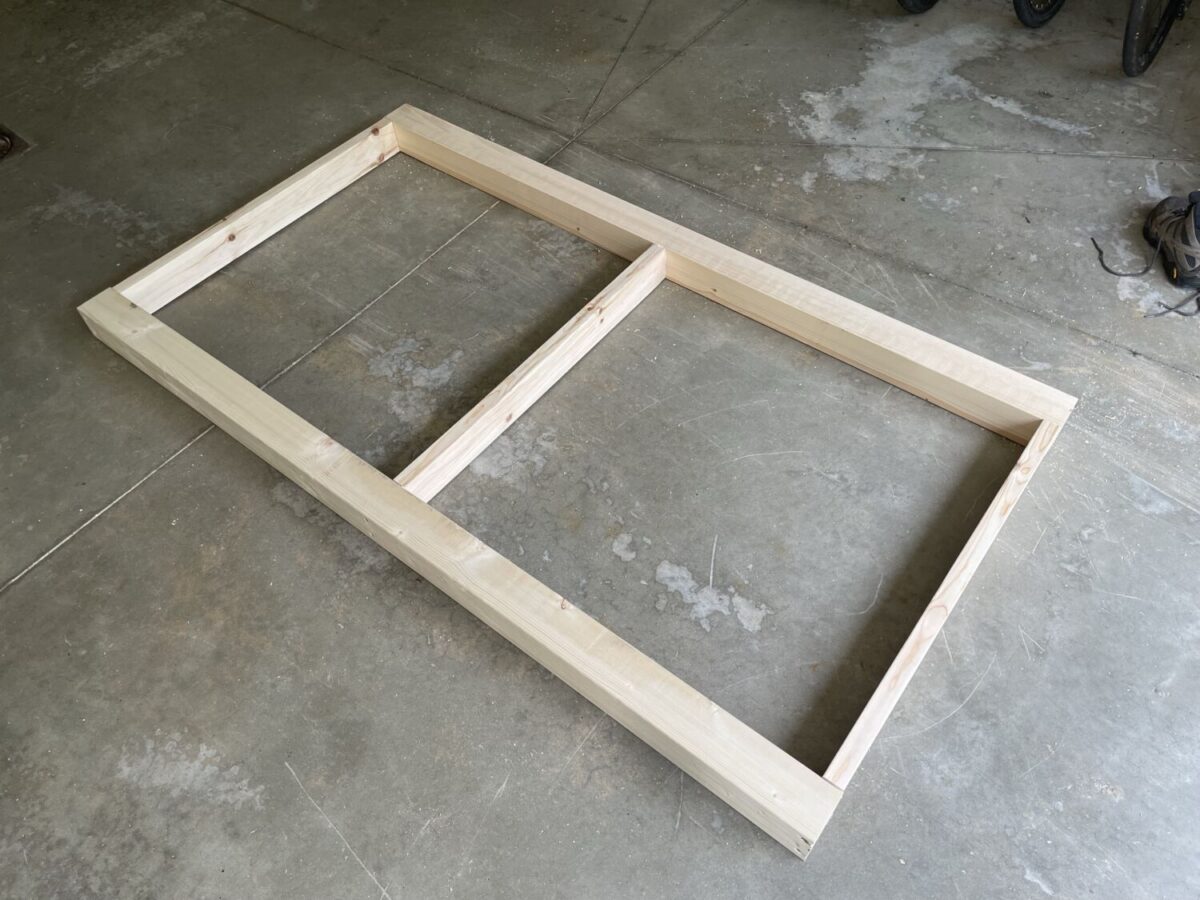
After the frames were done, it was time to attach the plywood top surfaces. As mentioned before, the tops are oversized to account for any mistakes or out-of-squareness in the frames. The tops are secured with drywall screws, and then I flush-trimmed the tops using the router. I felt this was a pretty unique way to ensure the tops exactly matched the frame, and it definitely made the process much easier than trying to match the shape with a handheld circular saw.

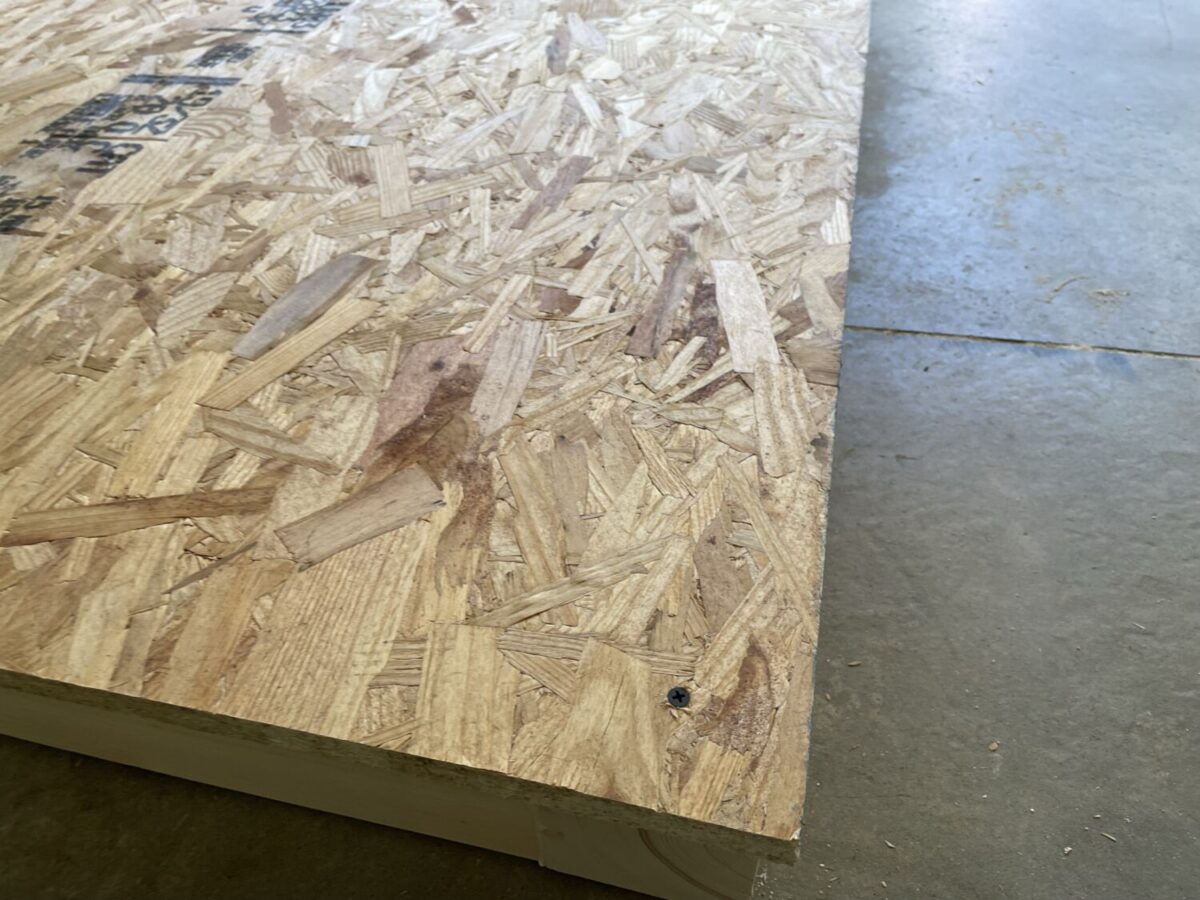
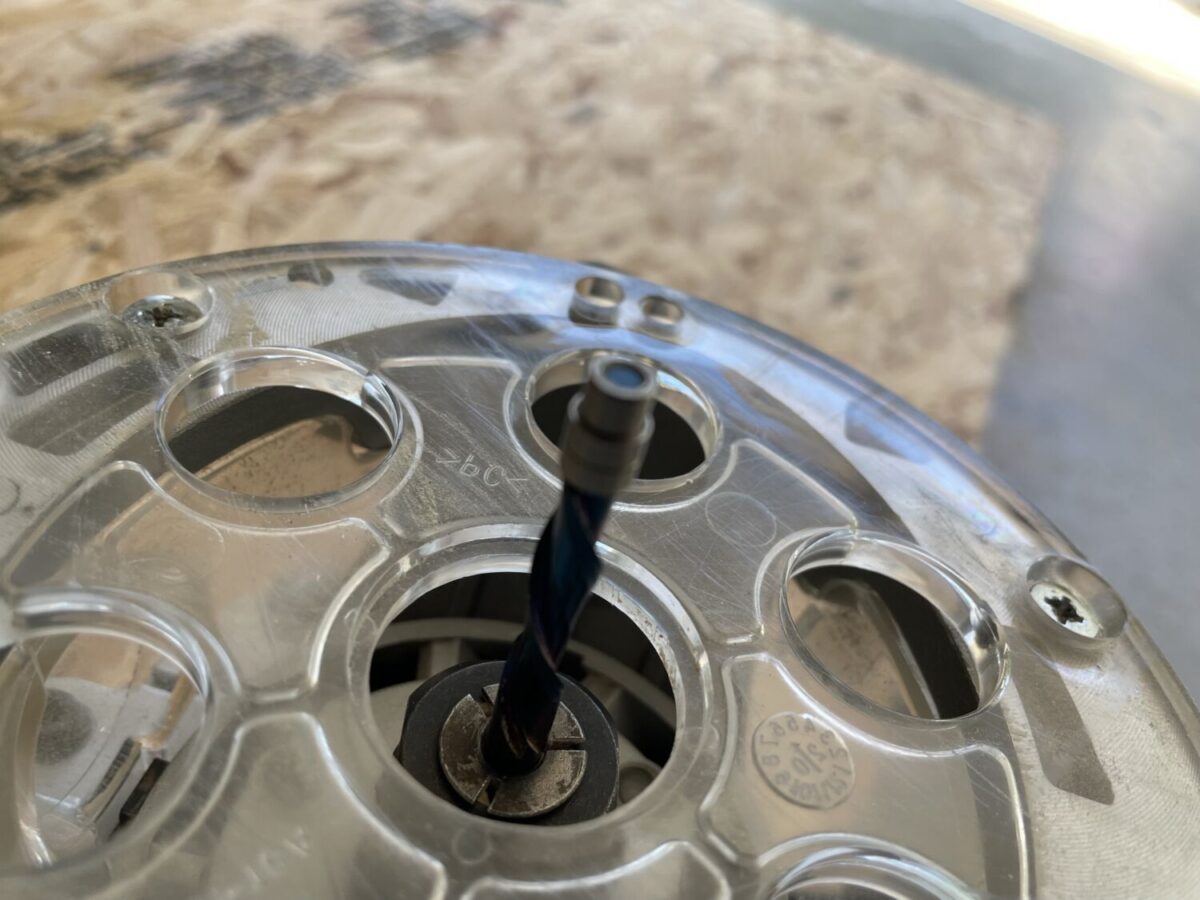

Now with the two frames of the base done, it was time to connect them. There are four legs separating the frames and the front two taper in to connect the differently sized frames. I used the miter saw to create accurate angled beams from 4″x 4″ for the front legs. Then they were attached with screws and wood glue. Then the process is repeated to attach the top.
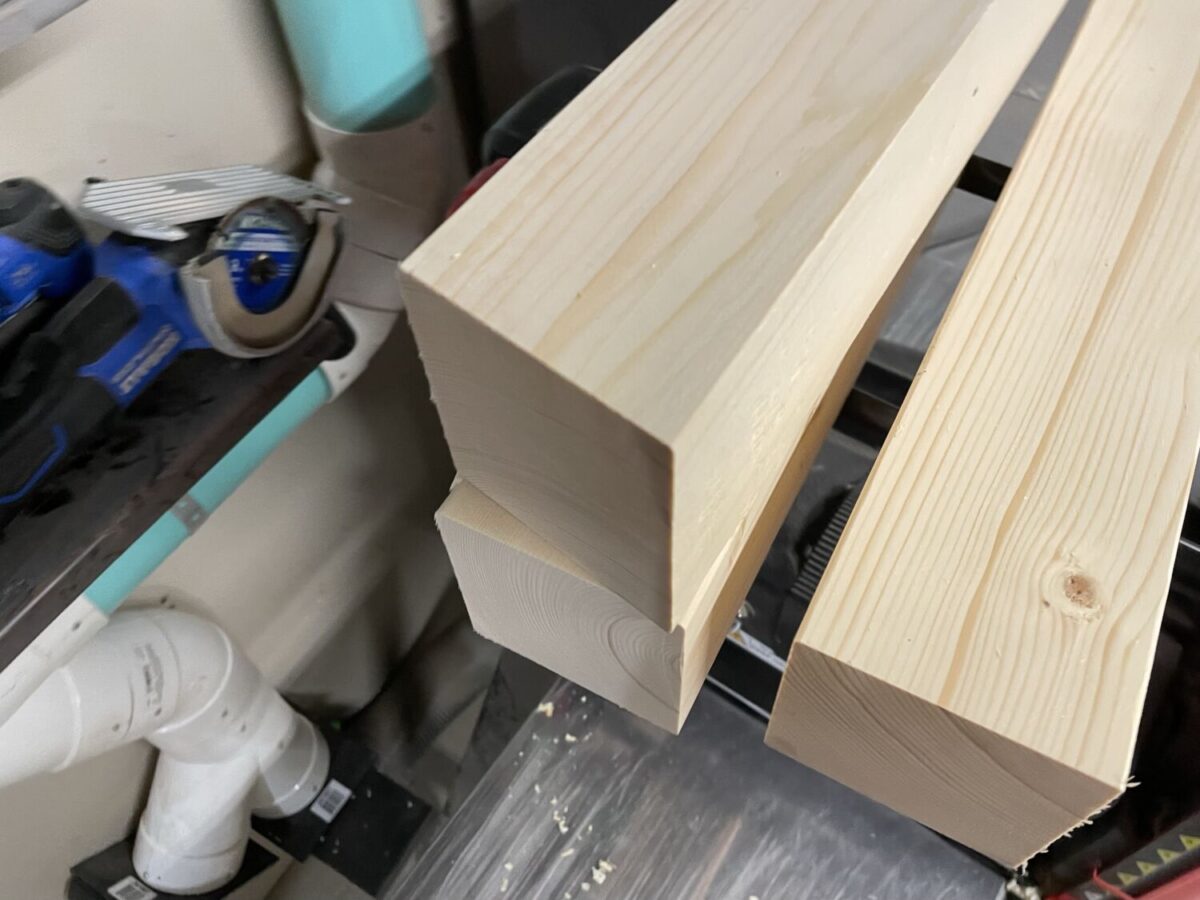
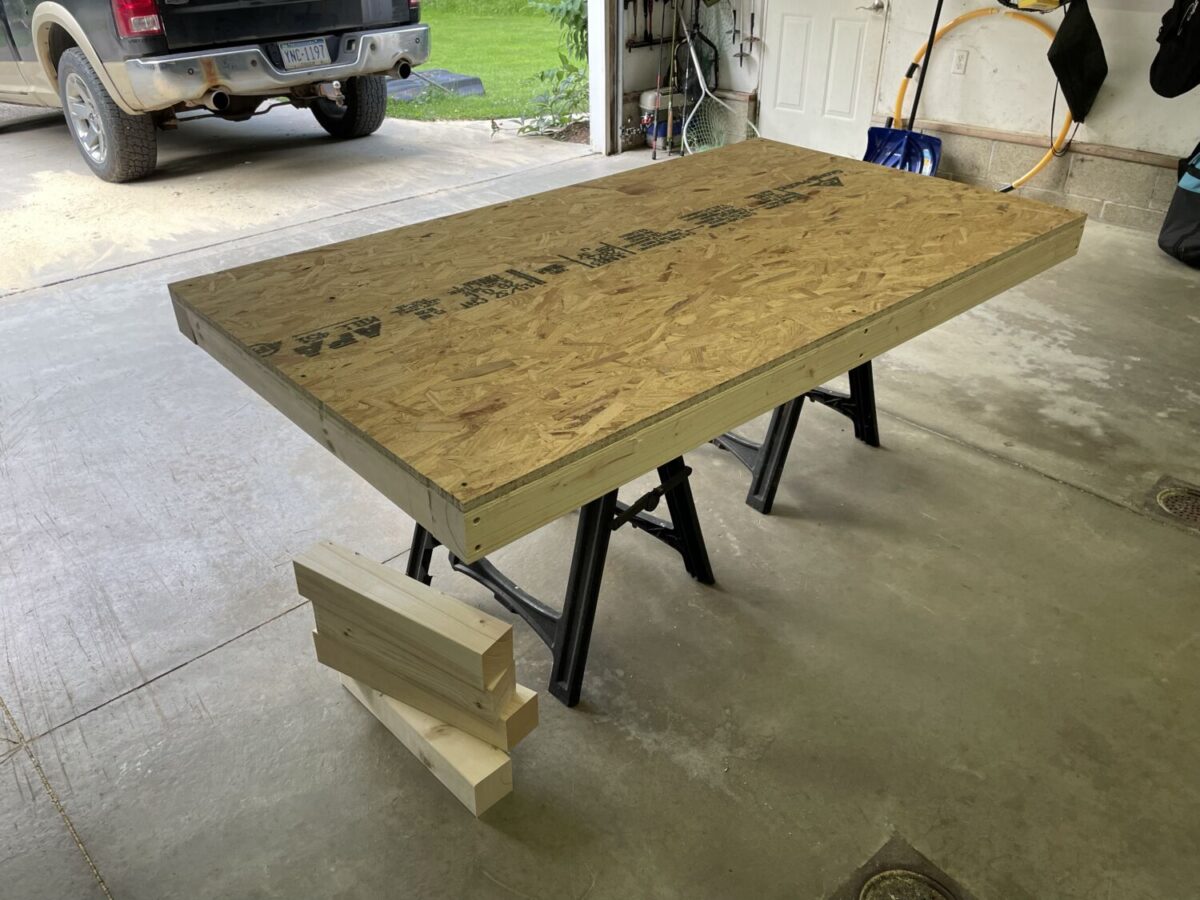
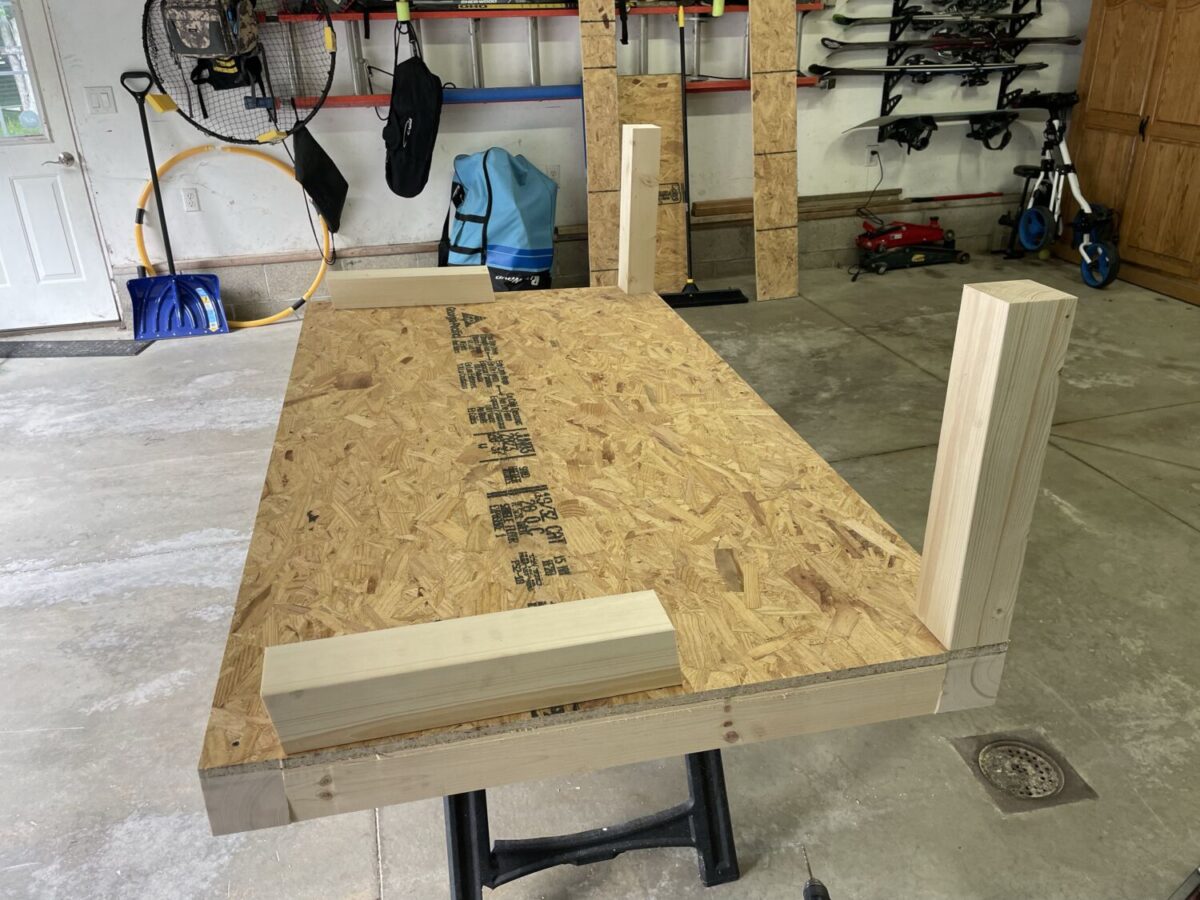
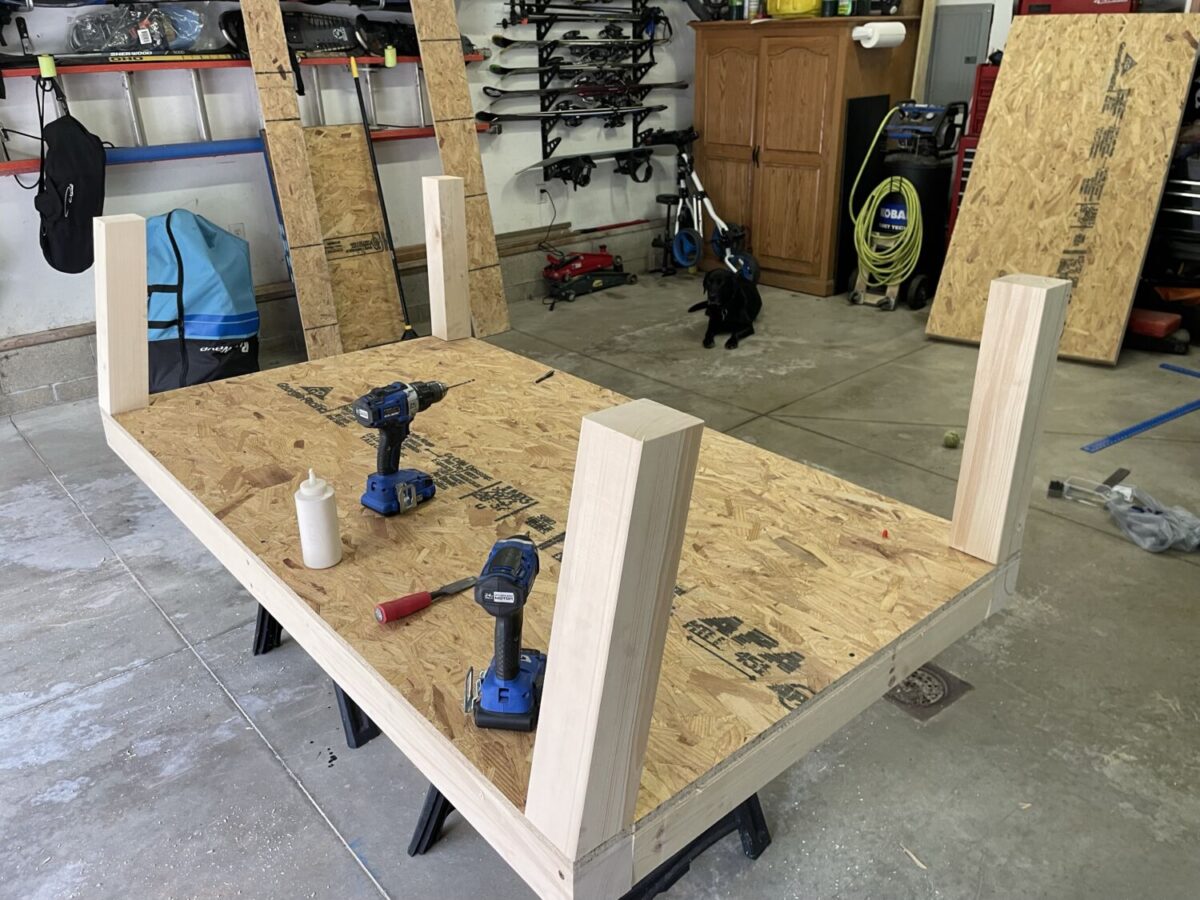
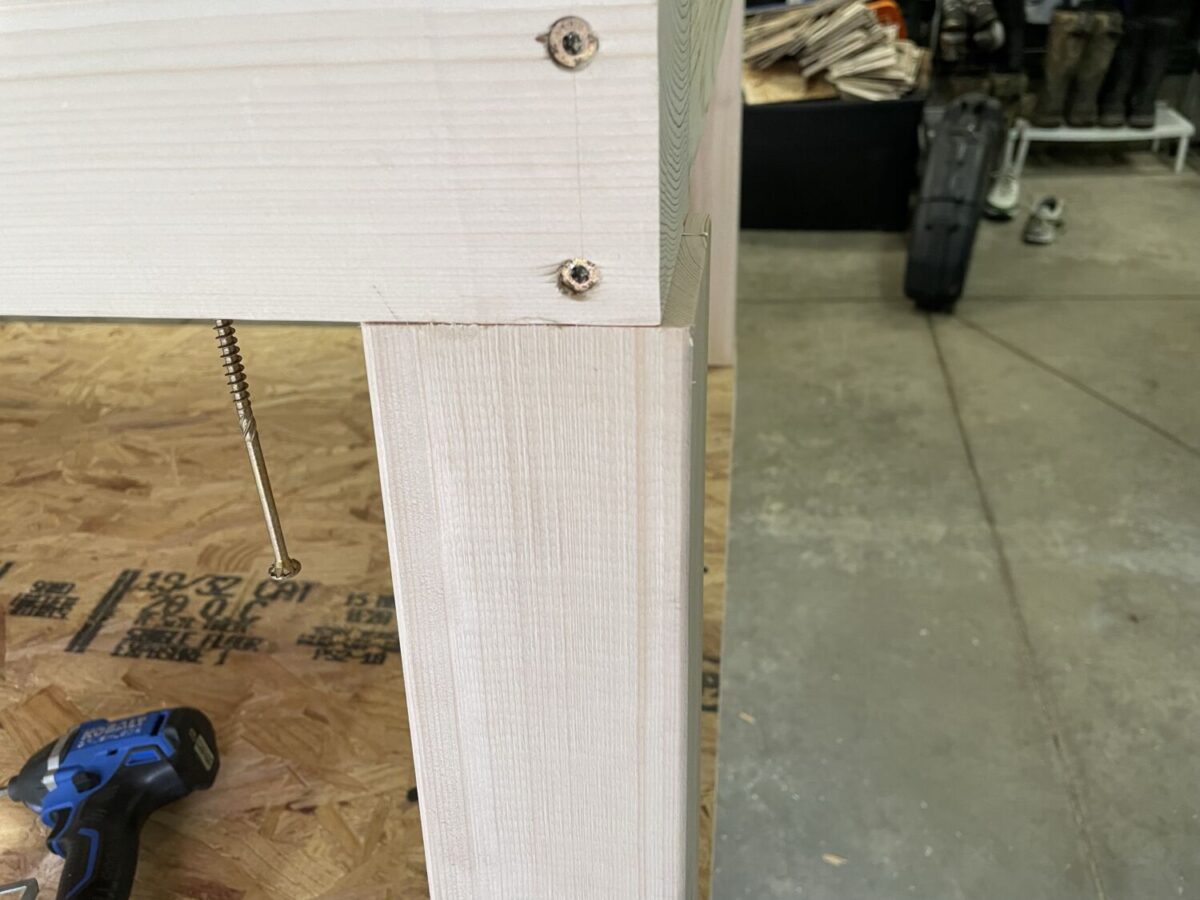

Finally, I put heavy-duty casters on the bottom so that the laser can actually be moved. The base alone weighs about 80 lbs, so the casters are rated for 120 lbs each.

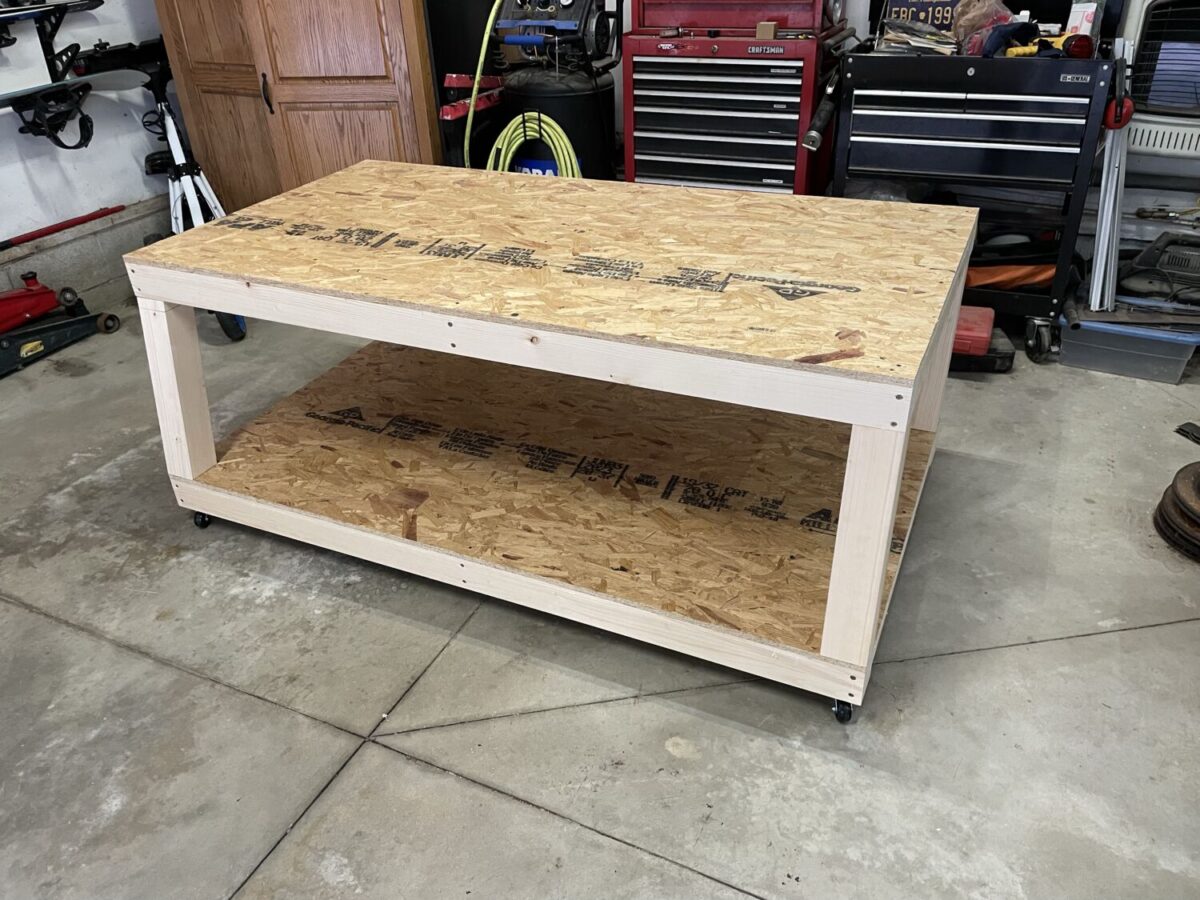
Next Steps
The base is ready to go! It’s got a coat of dark stain/polyurethane drying on it to protect it. The next steps include the aluminum extrusion framing and the bed lift subsystem.
Go back to the K400 homepage.
Other Project Updates
See the rest of the project posts below:
What more do we offer?
Discover other great products and stories:
